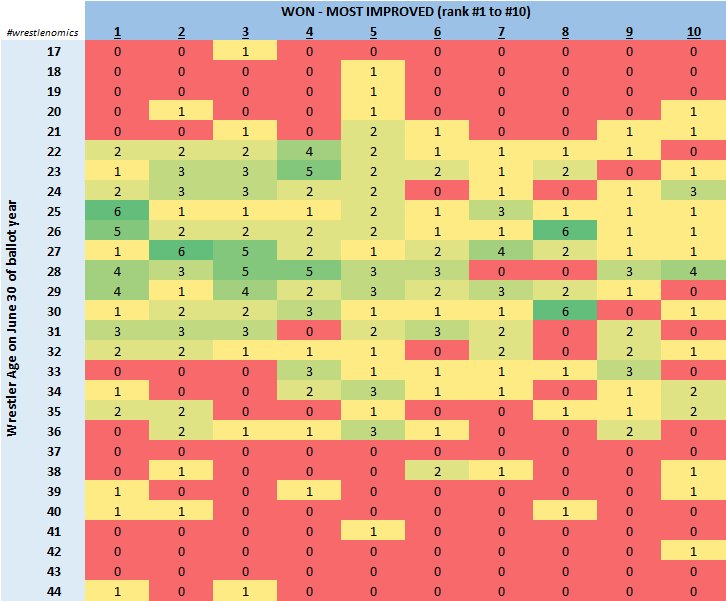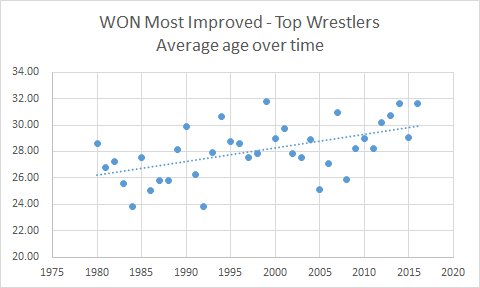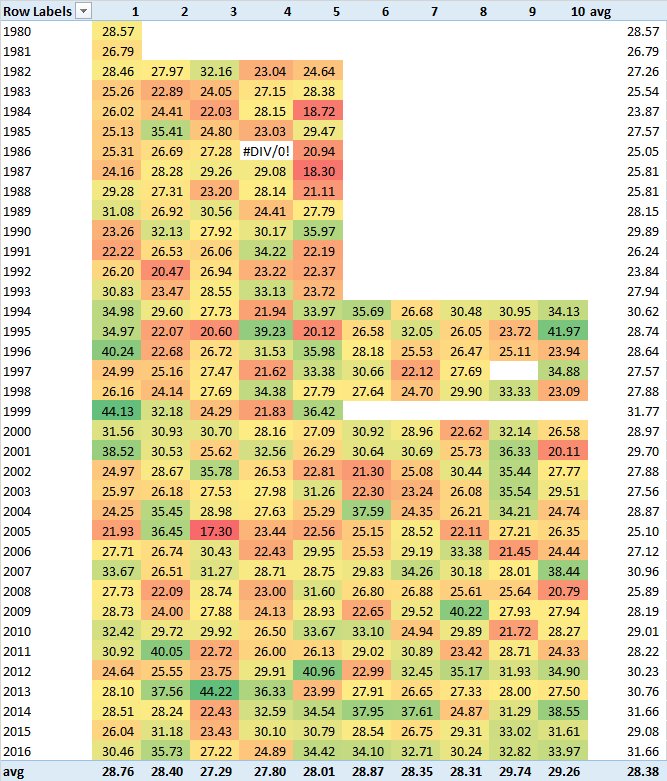1) Turning PG for creating viewership among kids and families seems to have overly sanitized it for the crucial 18-34 male demographic. This set seems to be losing interest and is increasingly weaned away by the bloodier options e.g. UFC. Is turning a sub-brand (Smackdown?) into a Rated show for the Male 18-34 an option? Full of the good ole blood n cuss show?It's an interesting question and certainly a subject that comes up a lot – does the “PG” nature of the product limit WWE’s ability to continue to grow their audience?
I think it’s important to look at how WWE makes their money:
· Television Rights ($241.7 million; 33.1%) – about 49.6% OIBDA %
· WWE Network Subscriptions ($168.3 million, 23.1%) – about 23.8% OIBDA %
· Live Events and Travel Packages ($144.4 million, 19.8%) – about 28.9% OIBDA %
· Licensing ($49.1 million, 6.7%) – about 55.8% OIBDA %
· WWEShop ($34.6 million, 4.7%) – about 21.1% OIBDA %
· Digital Media ($26.9 million, 3.7%) – about 17.1% OIBDA %
· Venue Merchandise ($24.2 million, 3.3%) – about 40.5% OIBDA %
· Home Entertainment ($13.1 million, 1.8%) – about 40.5% OIBDA %
· Traditional PPV ($12.6 million, 1.7%) – about 23.8% OIBDA %
· WWE Studios ($10.1 million, 1.4%) – negative OIBDA (-2.0%)
· Corporate & Other ($4.2 million, 0.6%) - negative OIBDA (-4257.1%)
Not only is television rights their largest revenue source, it’s their most profitable revenue source ($120 million OIBDA annually). It’s twice the OIBDA % compared the WWE Network or even Live Events.
And WWE Television rights fees have contractual escalators. Regardless of the ratings or value of the advertisers, WWE is pretty much guaranteed to receive more and more money from their largest television deals (US, UK, India) through 2019. Those top three deals are likely to represent more than three-quarters of all of WWE’s television revenue and the US deal is certainly more than half the company’s total television revenue. They’re looking at nearly $20 million in incremental TV rights fees annually for the next three years.
USA Network (parent company NBC Universal) has agreed to these terms. They get the value by using WWE programming to keep their network as a top rated cable network with commands high carriage fees. They can go to advertisers to sell the eyeballs that WWE is delivering. While professional wrestling has always done well in terms of ratings and poorly in terms of advertising, since WWE has basically turned the keys over to USA, in recent years, USA has succeeded in bringing in a host of new “blue-chip” advertisers to air during WWE programming. That’s a huge win for WWE and according to their marketing and branding officers, that win came directly from selling a PG product. Advertisers were leery of man-on-woman violence and overtly sexually situations. That said, obviously, blood & sex sell plenty well on other networks.
Some of that may be because professional wrestling has historically commanded low ad rates and been associated with demographics that don’t have much income.
Look at the Sports Business Journal;s 2013 article comparing wrestling, boxing and MMA fans. WWE fans were the least educated and had the lowest household income.
WWE has changed their product because that’s what the network wanted them to do so they could better sell advertising. While it might impact WWE’s ability to attract new fans (which in turn damage their WWE Network subscription base and the Live Events business), they must see the trade-off being the ability to deliver their promised product to the Network which has guarantee the television revenue.
When you watch the WWE Business Partner Summits (something I did in 2015 and 2016), what is very obvious is how much WWE values being associated with higher-end brands and how that's been a priority for the company. This was a slide from the presentation about new advertisers that WWE had:
Regarding Smackdown, the decision to move it to the USA Network and make it live was driven by the Network. As I understand it, WWE was actually able to negotiate a bit for additional funding to off-set the added expenses of going live. And while Raw ratings have continued to slip year-over-year, Smackdown ratings are up.
Would it benefit Smackdown to be further differentiated from Raw by showcasing a different style? Absolutely. But while both shows are under the thumb of the same corporate parent, I just don't see it happening in the near future.
I do believe that for a time, WWE was able to use shows like Total Divas (and now Total Bellas) as decent tool to create more interest and awareness of WWE characters in an underserved demographics (women). And it's true that coverage of these reality shows has begun on female-centric websites like Jezebel or more mainstream websites like Buzzfeed that probably would never have happened unless WWE (again through NBC Universal) found a way to put a different product on a different channel. However, there is great argument about whether this has a cross-over effect which benefits WWE - are these people tuning in to watch Raw & Smackdown? Are they going to live events? Are they purchasing merchandise of the characters on the reality shows? Are they subscribing to the WWE Network to watch back episodes?
While the percentage of females watching Raw has actually gone up in recent years (and it's dramatically up from twenty years ago when the product has an overwhelming young male viewership), some of that is just because there has been greater attrition of men watching TV rather than an enormous growth in women viewers. I would say the "Divas Revolution" certainly has resonated with many viewers, but it's a little too simplistic to tie the entire narrative into a single bullet point in my opinion.
The idea that what fans want is "blood" is an open question. We're entering a phase where blood has been away from the screen so much, that many fans don't have any interest or desire to see it return. I know my wife can't stand it when it shows up accidentally during matches or when I'm watching old footage. But there is certainly a gritty, story-telling element to it which helps UFC connect. That said, UFC is built on stars just like WWE. When the stars are fighting, people tune in. Just like wrestling, good matches don't usually lead to good ratings. Stars leads to ratings. And likewise, UFC has increasingly seen feast or famine as the number of megastars dwindles. Bellator's ability to draw has never been predicated on having the best matches, but rather on the nostalgia of the star fighters they can reregurgitate one more time. I would also argue that UFC plays the "real sports" element in a way that WWE struggles as sports entertainment. The suspension of disbelief is simpler in a MMA fight than a pro-wrestling match. That's also why WWE likes to pretend their competition is other entertainment shows rather than other live combat events. Yet, WWE's contracts with performers and arenas have specific language about MMA written in because it's clear there is a big cross-over there both in terms of audience and in terms of talent.
2) Using part-timers. Prohibits the creation of more/enough Superstars that generate viewership. Also, part-timers keep getting top billing at PPVs and the 4 tent-pole events undermining the growth of new generation Superstars. It's a vicious cycle, then.On one hand, WWE has an enormous number of people under contract between Raw, SmackDown and NXT. That said, the business is still struggling to create mega-stars that stick around above the pack. While everyone loves to rag on Roman Reigns, the reality is that he is selling a lot of merchandise and in some circumstances, his house show numbers are decent. Cena is still a star. And beyond that, it gets fuzzy – Owens? Orton? Rollins? AJ? They’re great wrestlers, but they don’t have that aura about them that puts them into the stratosphere like Austin or Rock or even HHH.
I did a study once in an article for Fighting Spirit Magazine about new talent joining WWE and how long before they were a “main eventer”. I didn’t qualify whether business did well or not while they main evented, but rather just how look it took them to get to that point. What I learned was that it was essentially a crapshoot – the best strategy you could have was to bring as many people up as possible in a year because on average, the same percentage of people succeeded. My conclusion was that it’s tough to pick winners & losers – you’re better letting the wisdom of the masses start to see who connects and who works. We know Vince never saw Foley as a main eventer, but he ended up being the right guy at the right time. Same thing could be said for both Daniel Bryan and CM Punk.
That all said, what makes a wrestler into bonafide draw is that specialness. And one thing that can be said for part-timers is that they often give off that vibe that what you’re seeing is not commonplace. Brock Lesnar might have a sweetheart deal but the fact that WWE (Vince, really) is willing to pay him that much (and continue to renew the deal) says something about the value they’re seeing in him. The fact UFC went out of their way to get him back, says something about him. The fact that bringing him to a house show in Chicago with Orton made the gate explode, says something about him. I can understand the dilemma about whether you can build your promotion around a guy that isn’t working house shows. They’ve done with Rock. They’ve done it with Brock. They’re doing it with Goldberg. And I do agree that some hardcore fans are turned off about it. Yet, I must admit that when Goldberg came back suddenly my facebook feed was flooded with older fans, people who haven’t watched WWE in a decade, posting on my wall – “GOLDBERG OMG!”.
Fans long for a connection with the stars of their use. Sting was the same way. George Barrios, WWE CFO & Chief Strategy Officer, tells a story that when the WWE Network launched one of the first things they noticed was the number of people searching for Sting matches. That surprised the company since he was not someone they had ever used and someone Vince didn’t have a strong interest in anymore. However, between that evidence of fan interest and the video game deal, WWE made it happen.
And that’s a big part of it, we’ve seen several of the stars which have been negotiated through the video game deals which have turned into actual WWE deals (Angle, Warrior, Goldberg, Sting).
That said, WWE has altered the structure of what they are selling. They believe they are selling a company act – not individual superstars. You’re going to WrestleMania for the weekend – not for the individual matches. Same thing is true with house shows. In addition, the WWE Network essentially evens out the drawing ability of PPVs. We don’t have peaks & valleys. Instead, the number of subscribers outside of the January-April timeframe is generally pretty flat. So, WWE feels less and less that it’s critical that they must put a certain matchup together and instead it’s just the general feeling that whatever they put up, that’s what the hardcore consumers are going to buy.
It is probably worth noting that part-time talent is not subject the drug testing policy that full-time talent is. That means that Undertaker, Goldberg and Lesnar have certain advantages that help them stay show-ready despite their advancing age.
I completely agree that WWE is sacrificing the ability to create mega stars and long-term relationships for short-term pops. Yet, they have been able to make the part time wrestlers seem special. Perhaps it’s an argument that there should be more rotation (making the brand split more important, or developing alternative territories to send talent away for awhile). As long as the bottom line keeps growing, WWE seems increasingly less concerned about the declining ratings and the stagnant environment.
What I wonder is whether we’re reaching a plateau or whether it’s the cusp of the next level. The latest real stars to join WWE have mostly been either multi-generational talent (Usos, Reigns, Charlotte) or imported and seasoned wrestlers (Nakamura, Asuka, Samoa Joe, Rollins, Ambrose, Harper). There is a very thin list of people who are genuinely NXT-trained talents (Corbin, Braun) that the performance center has produced from scratch. Maybe all of that is about to change. Maybe the lack of remaining part time stars that can still go will force WWE’s hand.
-Chris Harrington
@mookieghana



